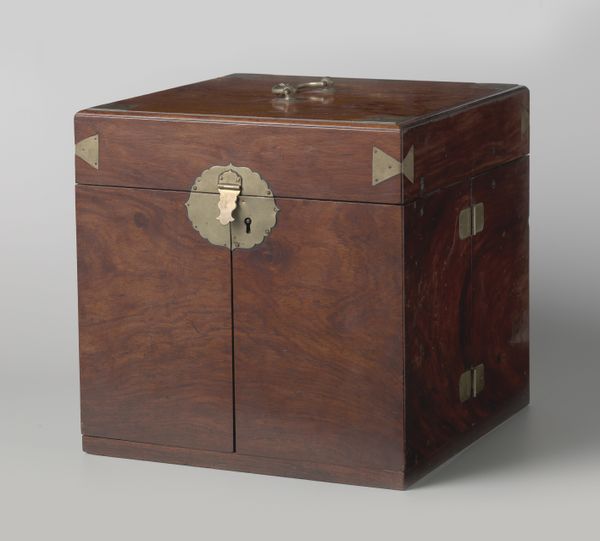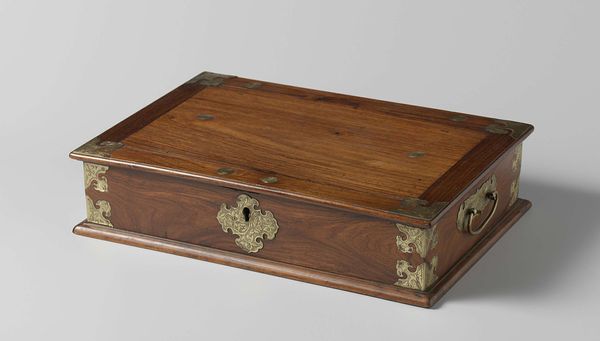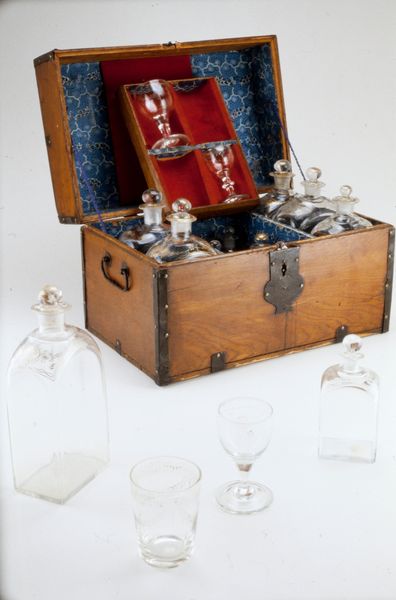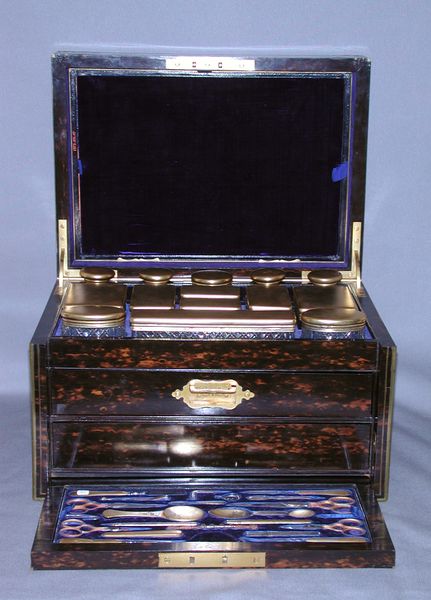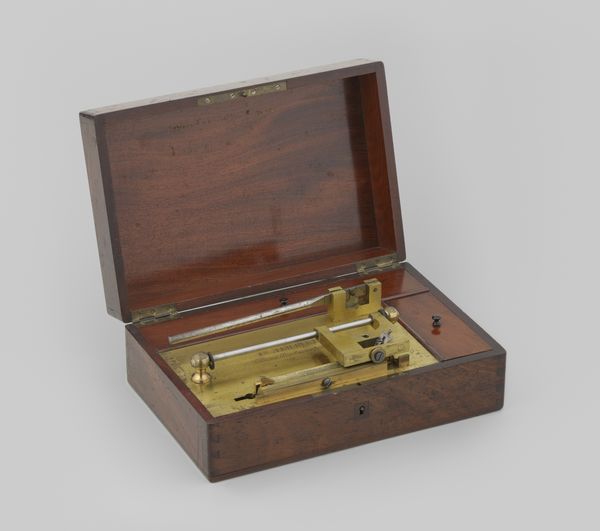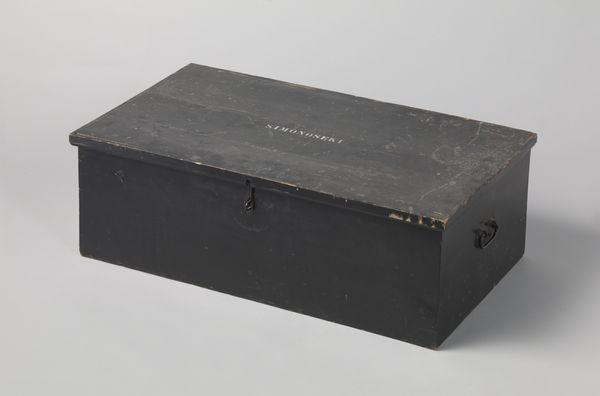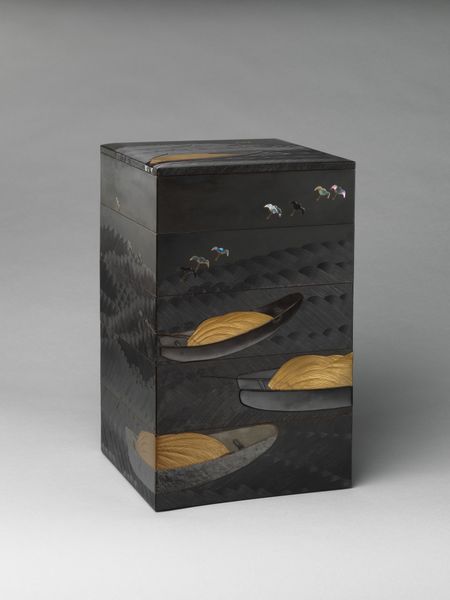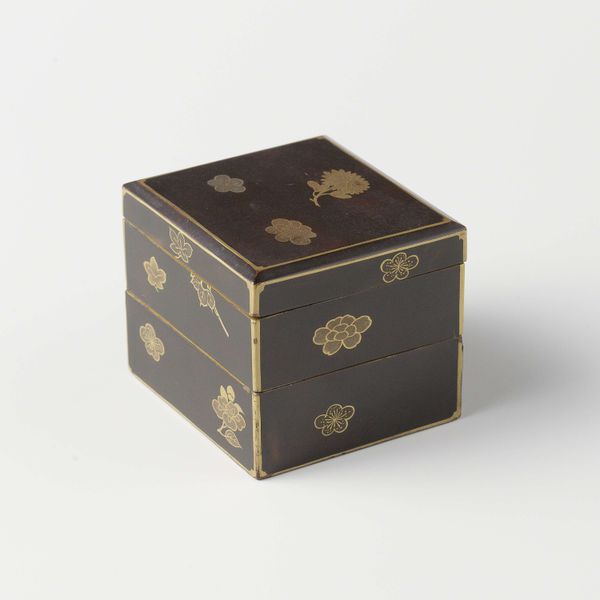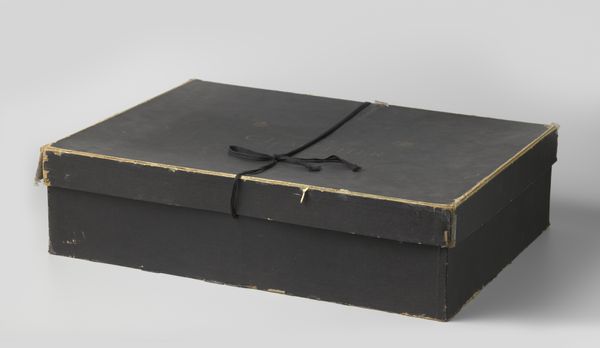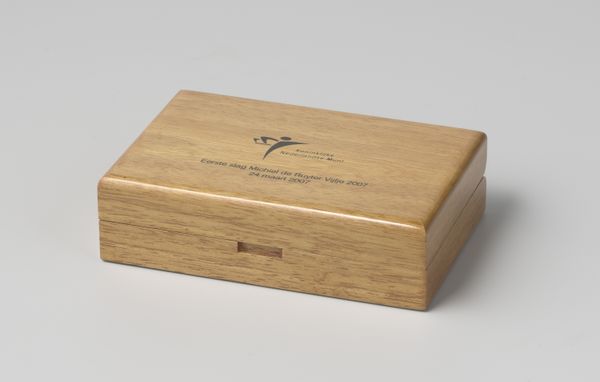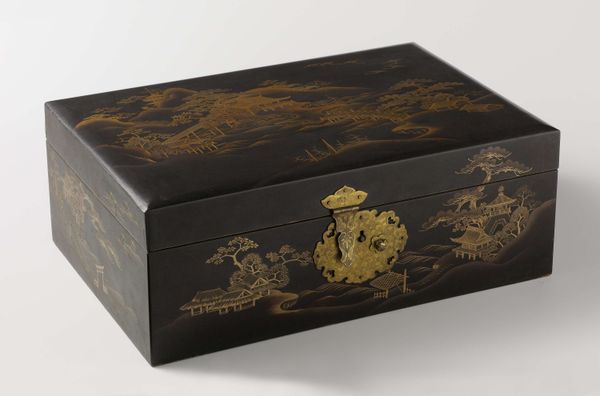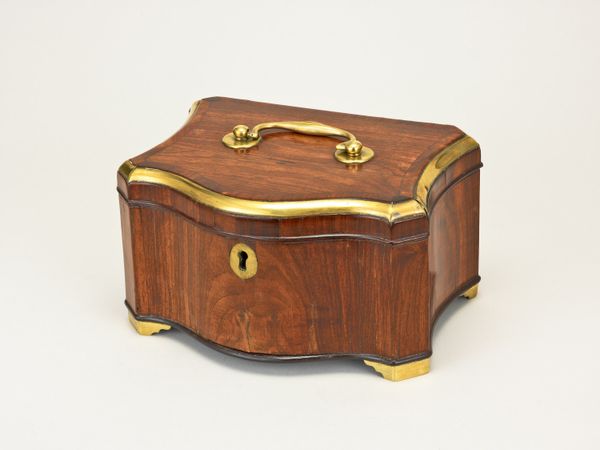
ceramic, wood
#
asian-art
#
ceramic
#
japan
#
orientalism
#
wood
#
decorative-art
Dimensions: 11 1/2 × 9 × 13 11/16 in. (29.21 × 22.86 × 34.77 cm) (closed)
Copyright: Public Domain
This is a storage cabinet for inrō, made by Shibata Zeshin sometime in the 19th century. Zeshin lived during a time of great social and political change in Japan as the country transitioned from feudalism to a more modern, Western-influenced society. Considered to be one of the greatest lacquer artists of all time, Zeshin’s identity was deeply rooted in his cultural heritage and artistic traditions. His choice of lacquer, a traditional Japanese craft, can be seen as a deliberate act of cultural preservation. This cabinet, with its intricate designs, speaks to the skill and artistry valued in Japanese society, while also serving a practical function. Inrō were small, often ornate cases used to carry personal items, like medicines or seals. The cabinet is not just a piece of furniture; it’s a reflection of personal identity, social status, and the intimate rituals of daily life. The cabinet serves as a container for these smaller containers, holding the stories of those who used it.
Comments
minneapolisinstituteofart almost 2 years ago
⋮
This lacquer storage cabinet was made to store a collection of inrō, small containers for holding a variety of personal items that could be hung from the sash of one’s robe. Perhaps surprising given that function, the exterior of the cabinet features an assortment of motifs that mimic metal objects associated with Japan’s warrior culture: sword guards (tsuba), dagger hilts (kozuka), and, on the inside, arrowheads. Each of these motifs mimics the artistry of Japanese metalworkers in the 1800s and several even have signatures by famous metal artists, but they are actually lacquer. In fact, each of the motifs was created by applying layers of colored lacquer in reverse order to plaster molds of actual tsuba and kozuka.
Join the conversation
Join millions of artists and users on Artera today and experience the ultimate creative platform.
